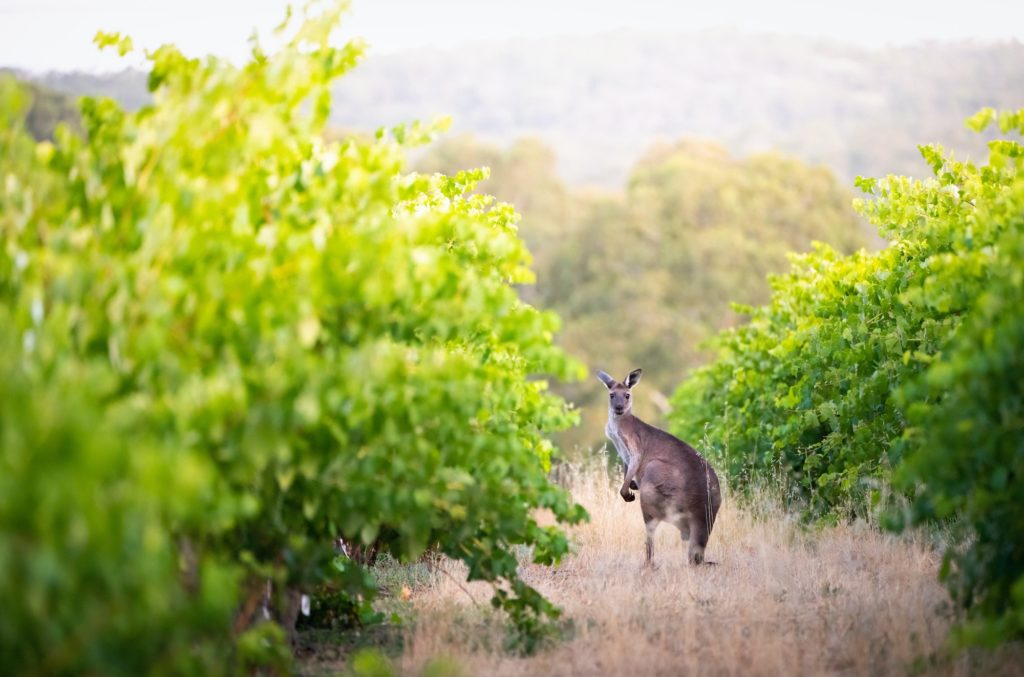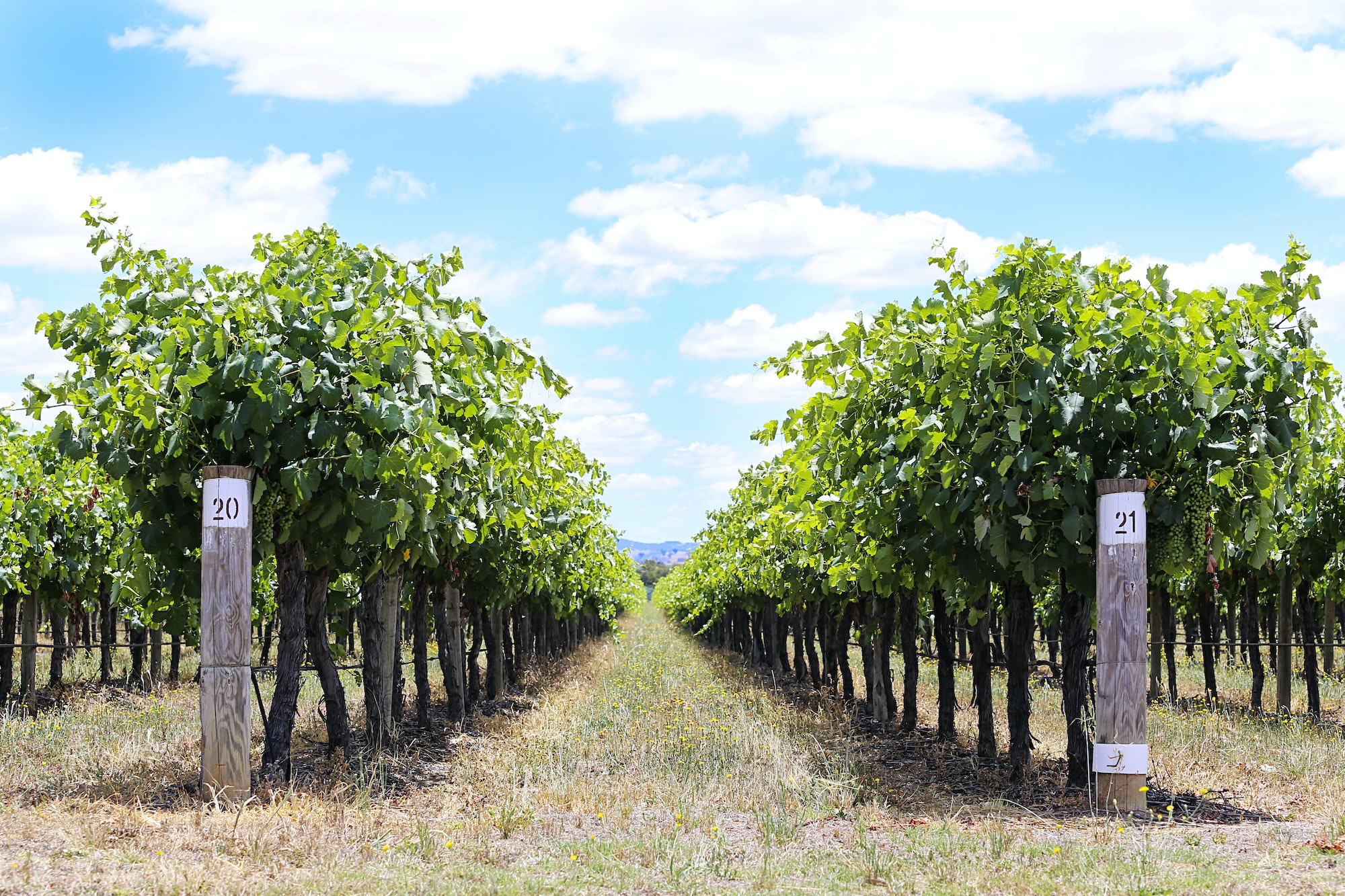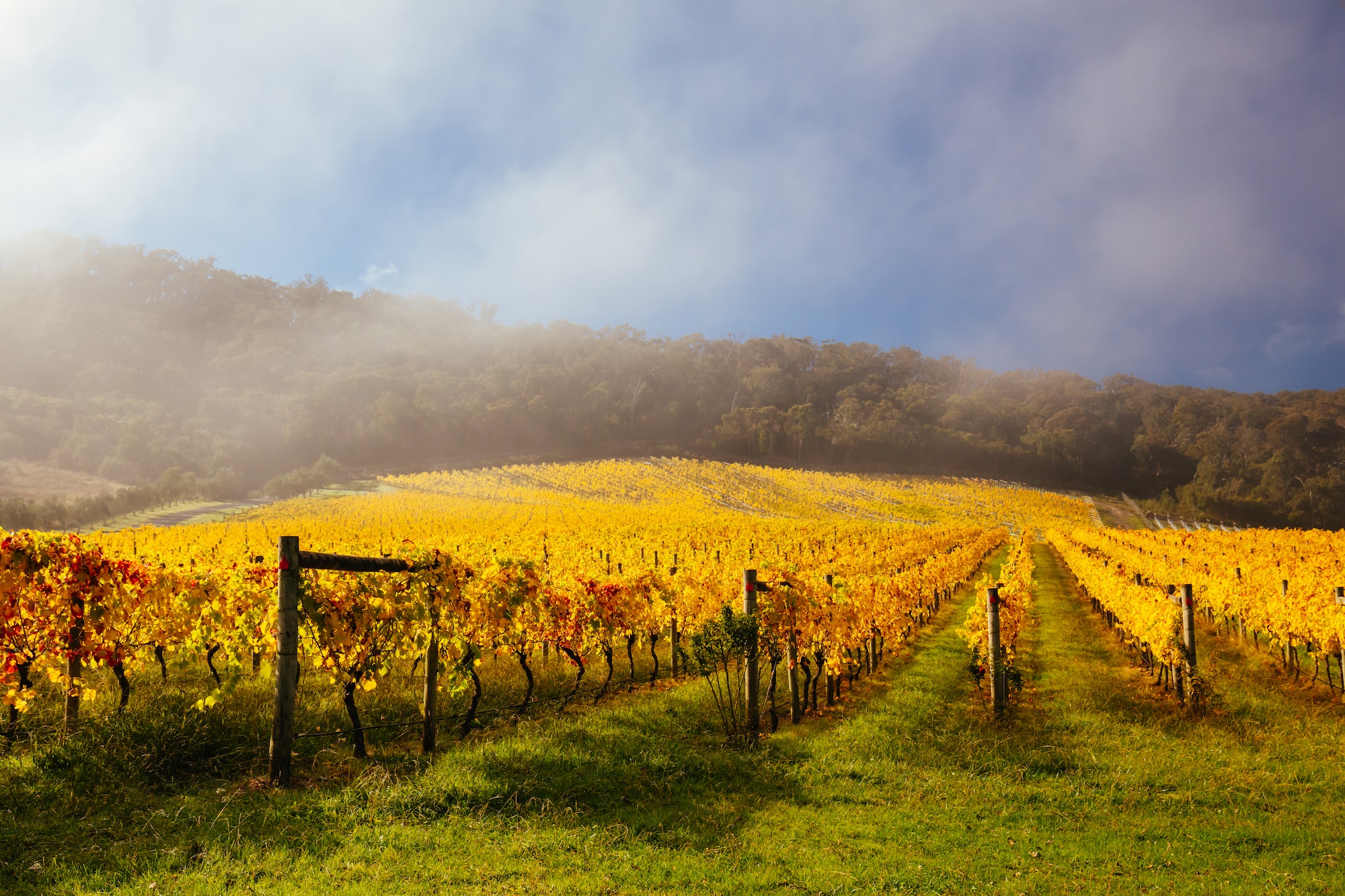A Guide to Australian Wine for Beginners
Australian Wine

Australian Wines Mature
You could say that New World wines often have a lingering stereotype of big, bold, and fruity. Australian wines may have fit this image once upon a time, but not anymore.
As Australian winemakers innovate and diversify, they’ve expanded far beyond a few varietals and regions to help Australia and its wines become an influential and sought-after part of the wine industry.
If you’re unfamiliar with Australia’s wine or its regions, we’re here to inspire your newest wine adventures. Read on for our guide to Australian wine, which looks at the country’s wine history and regions, and get ready to add new names to your wine collection.

A Brief History of Australian Wine
As a New World wine region, Australia doesn’t have a wine history dating back to the medieval era or older. That doesn’t change the fact that it still has a pretty impressive history.
Back in 1788, Captain Arthur Phillip brought vine clippings during the First Fleet founding of New South Wales. While his landing spot of Sydney Cove was too warm and humid for cultivation, later attempts at Parramatta River to the west proved more successful. Early years were still a struggle for wine making, with a few cases exported to England and elsewhere beginning in 1822.
Things improved in 1833, when James Busby brought vine clippings from several classic French grapes, bolstering production of Bordeaux-style blended wines and fortified wines. Wine production continued to climb until the later 1800s, when phylloxera pests destroyed much of the acreage.
Grafting onto resistant rootstock helped to save the wine industry, especially in the eastern part of Australia. Interestingly, some regions, such as Barossa Valley in South Australia and Margaret River in Western Australia, have remained phylloxera-free and still have their original, ungrafted vines.
By the 1960s, wine enthusiasts had a change of heart about their preference for fortified wines, turning to table wines like Shiraz, Cabernet Sauvignon, and Chardonnay. Winemakers took notice and opened their vineyards to new varietals. Starting in the 1980s, interest in new wines led to booming winemaking all across Australia’s wine regions.
With each new year, Australian winemakers continue to demonstrate their skills and enthusiasm for innovative production and quality wines.

What’s Unique About Australian Wines?
From Shiraz and Chardonnay to Viognier and Nebbiolo, wines in Australia love to reveal changing styles and climactic nuances. You’ll see endless variety across this expansive continent, from Western Australia with its cool, coastal Mediterranean climate to South Australia with its microclimates that shift from warm and dry to cool and hilly.
Australia is a country without native vines, and yet it has some of the oldest working vines — some of them are at least 150 years old. The country also has more than sixty wine regions, each with their own unique terroir. Combined with consistent quality and new wine blends, it’s no surprise that Australia ranks fifth in the world for its wine exports — about 728 million liters a year.
Understanding Wine Labels and Geographical Indications
To Australian winemakers, label transparency is of the utmost importance. A label can’t show a specific varietal, vintage, or region unless at least 85 percent of the wine matches.
Geographical Indications, or GIs, are similar to AVAs in the United States and Appellations in France. To have an accurate label, a wine must list the subregion, region, zone, state, or multi-state in which the grapes were harvested.
Australian Wine Regions and What They Produce
You’ll see a more fluid style of winemaking in Australia, where winemakers sometimes transport a grape harvest from several hundred miles away. Some wine producers even move grapes thousands of miles, bringing them more than halfway across the country.

The Regions
Western Australia
Winemaking in Western Australia is limited to the southwest coast with its moderate Mediterranean-style climate. Top wine regions include the coastal Margaret River, where Cabernet Sauvignon, Semillon, and Sauvignon Blanc dominate, and Mount Barker, where Riesling, Shiraz, and Chardonnay take the top spots. Winemaking in Western Australia makes up about 5 percent of national production.
South Australia
Even though you’ll only find wine regions in the southeast and south central parts of the state, South Australia makes up more than 40 percent of Australia’s wine output. Wine regions here range from hot with sandier soil in Barossa Valley or Adelaide Plains to cool with acidic soil in Eden Valley to cool with alkaline red soil in Coonawarra.
Shiraz is the top varietal in many regions of South Australia, including Barossa Valley, Eden Valley, Adelaide Plains, and McLaren Vale. Sauvignon Blanc excels in Adelaide Hills, while Cabernet Sauvignon takes first place in Coonawarra and Southern Fleurieu. Riesling shines in Clare Valley.
New South Wales
New South Wales takes second spot at 30 percent of national wine production. This state has the largest area devoted to vineyards, but its microclimates have significant differences. On the east of the Great Dividing Range, climates are warm, humid, and rainy. Higher elevation regions are cool and alpine, while further west, certain varietals thrive in hot, dry lands.
You’ll see Semillon and Shiraz in Hunter Valley, Chardonnay and Cabernet Sauvignon in the Central Ranges, and Shiraz, Chardonnay, and Semillon in the Big Rivers region out west.
Victoria
Victoria is a cool-climate state, and it produces about 20 percent of Australia’s wine. Unlike other states, winemakers are found all across Victoria, and many are boutique wineries.
Cooler climate wines do exceptionally well here, especially Pinot Noir and Chardonnay. Shiraz is equally popular, though, thanks to savory qualities unique to Victoria. Vineyards in Victoria also grow alternate varietals like Nebbiolo, Sangiovese, and Viognier. For wine regions, Yarra Valley, Heathcote, Mornington Peninsula, and Rutherglen are known for their quality wines.
Australian Wines to Enjoy
If you’re eager to explore Australian wines, we encourage you to peruse our online catalog with its range of Australian varietals and vintages. You can also give us a call for personalized assistance that’s sure to match you with the best wines from Down Under.
FOLLOW US ON SOCIAL MEDIA FOR EVENTS
Follow Us on Social Media
We regularly run wine tasting, open days, training and special events for our beverage partners. For the latest details follow us on Social Media.

